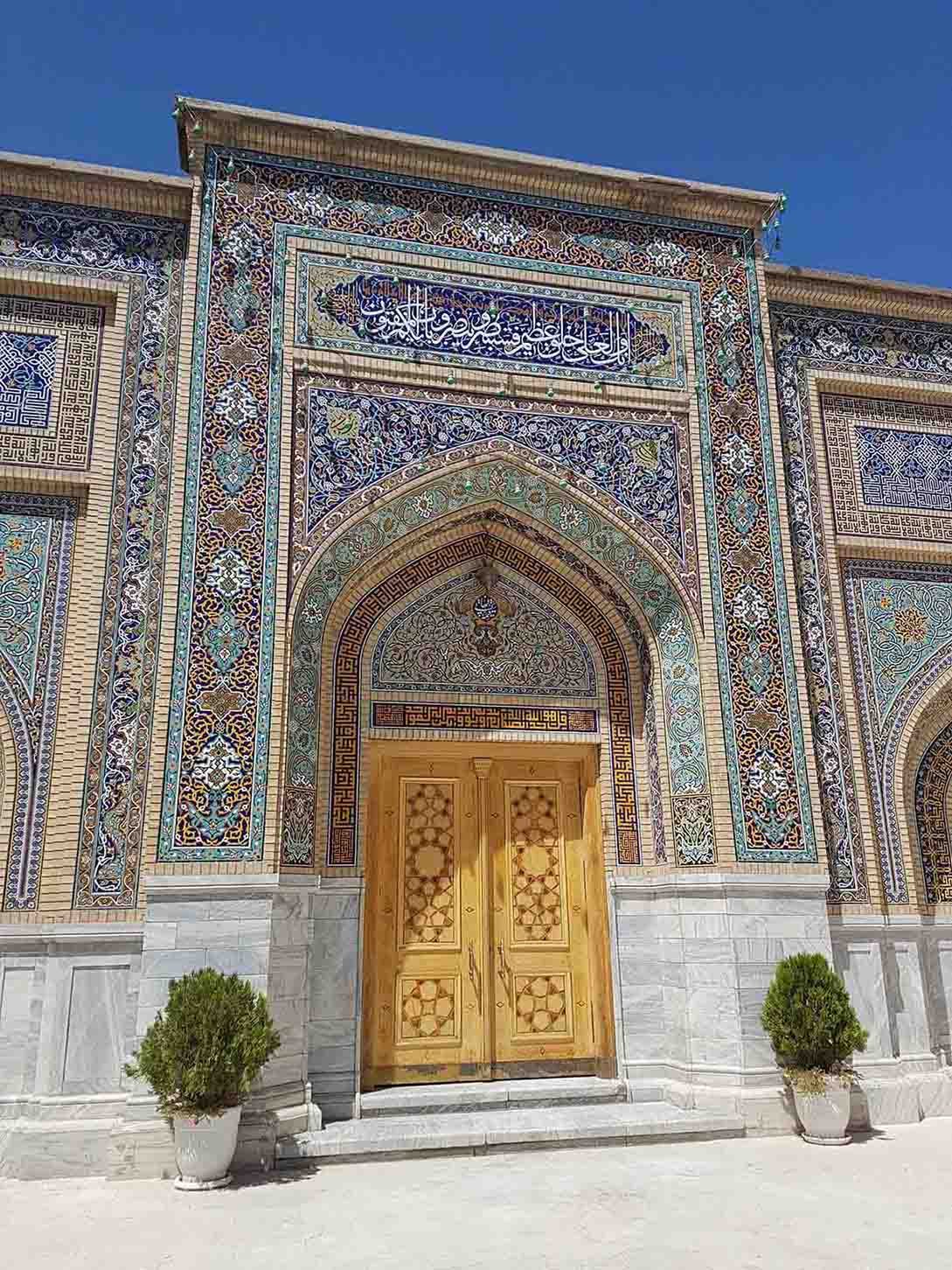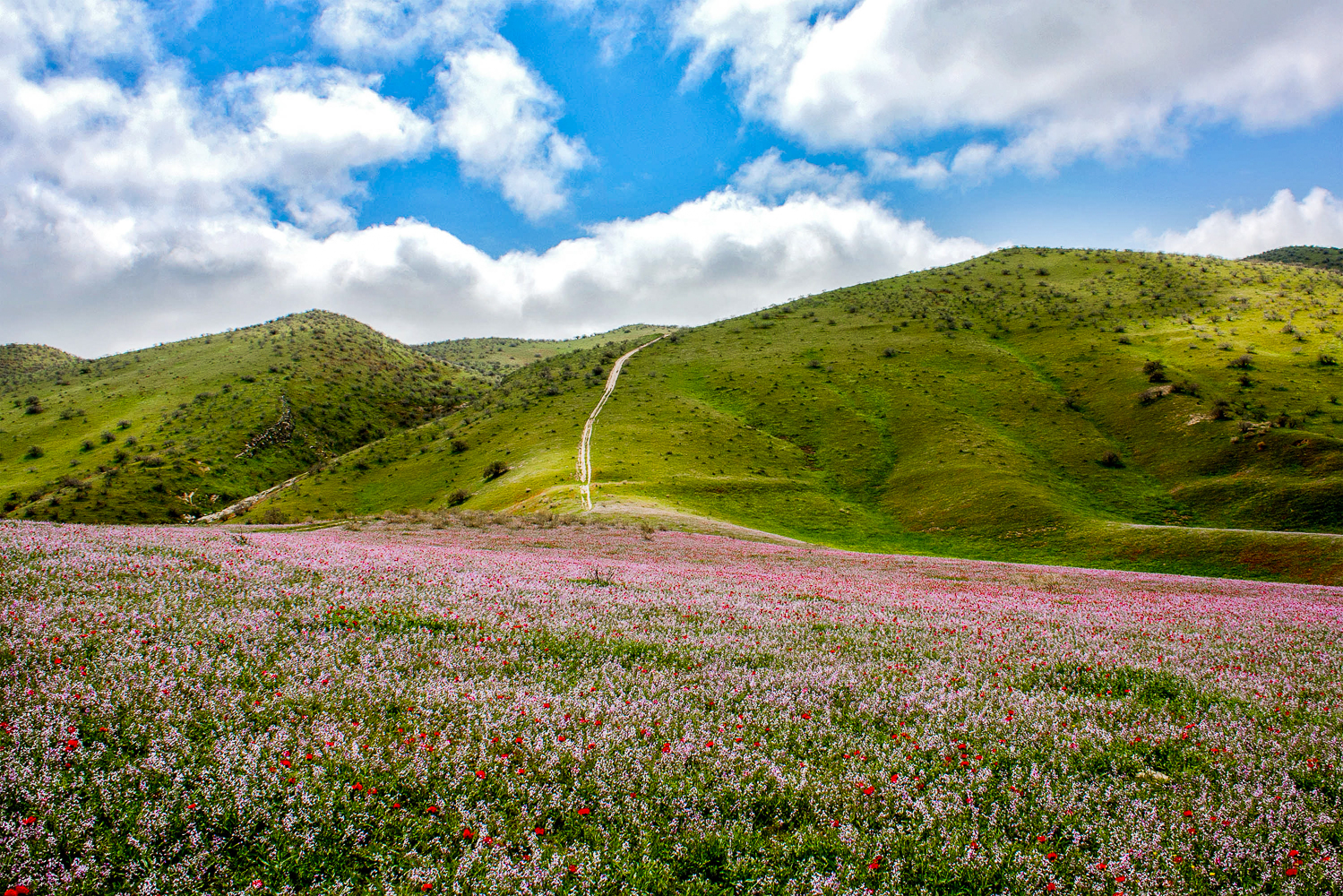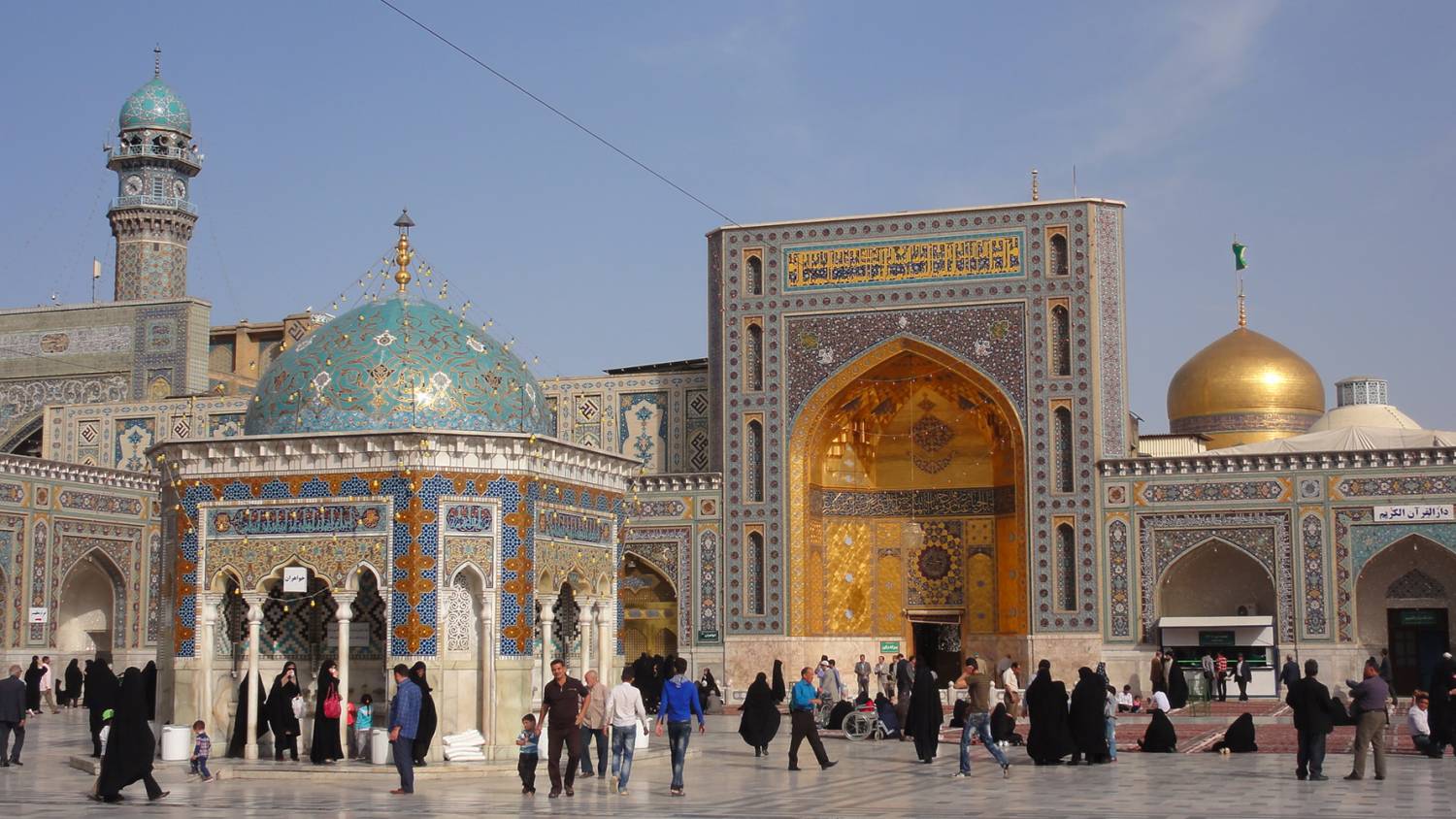Razavi Khorasan: Iran's Spiritual Heart & Hidden Gem
Nestled in the northeastern expanse of Iran, Razavi Khorasan Province stands as a vibrant testament to the nation's rich history, profound spirituality, and captivating natural beauty. As one of Iran's 31 provinces, its strategic location, bordering Turkmenistan to the north and Afghanistan to the east, has historically positioned it as a crucial crossroads of civilizations. This comprehensive guide invites you to embark on a virtual journey through Razavi Khorasan, unraveling its mystique, exploring its spiritual depths, and discovering the myriad attractions that make it a truly unique destination.
From the bustling, sacred city of Mashhad, the province's core and capital, to its rugged mountain ranges and ancient trade routes, Razavi Khorasan offers an unparalleled blend of cultural immersion and natural exploration. It is a land where ancient traditions intertwine with modern life, where pilgrims and tourists alike find solace and wonder. Prepare to delve into the heart of Persian beauty, a land steeped in spiritual significance and breathtaking landscapes.
Table of Contents
- Discovering Razavi Khorasan Province: An Overview
- Geographical Tapestry: Borders, Mountains, and Climate
- A Legacy Forged: The Division of Khorasan Province
- Mashhad: The Spiritual Core and Capital of Razavi Khorasan
- Beyond Mashhad: Exploring Other Cities and Attractions
- Tourism in Razavi Khorasan: A Journey for Every Traveler
- Economic Significance and Future Prospects
- Planning Your Visit to Razavi Khorasan Province
- Embracing the Spirit of Razavi Khorasan
Discovering Razavi Khorasan Province: An Overview
Razavi Khorasan Province, a name that resonates with deep historical and cultural significance, is truly a gem in northeastern Iran. It is one of the largest provinces in the country, spanning an area of approximately 117,769 square kilometers, which accounts for about 7.3% of Iran's total land area. This vastness encompasses a diverse array of landscapes, from arid plains to fertile valleys and towering mountains, each contributing to the province's unique character. Its geographical coordinates, ranging from 56 degrees and 19 minutes to 61 degrees and 16 minutes of east longitude, and 33 degrees and 52 minutes to 37 degrees and 42 minutes of north latitude, highlight its significant position within the Iranian plateau.
The province's allure is multifaceted, attracting visitors with its profound history, varied attractions, and spiritual magnetism. Hosting the revered shrine of Imam Reza, the eighth Shia Imam, has cemented Mashhad's status as the capital of religious tourism in Iran, drawing millions of domestic and foreign pilgrims and tourists annually. This spiritual heartland is not just a destination for religious observance; it's a vibrant cultural hub where ancient Persian traditions are preserved and celebrated, offering a rich tapestry of experiences for every traveler.
Geographical Tapestry: Borders, Mountains, and Climate
The geographical contours of Razavi Khorasan Province play a pivotal role in shaping its climate, biodiversity, and strategic importance. Situated in northeastern Iran, its borders are a mosaic of international and internal boundaries, each telling a story of historical connections and natural divisions.
Strategic Location and Borders
Razavi Khorasan is strategically positioned, sharing extensive common borders with neighboring countries. To the north, it borders Turkmenistan, extending for 833.6 kilometers. To the east, it shares a significant border with Afghanistan. These international frontiers underscore the province's historical role as a gateway and a vital stop on ancient trade routes, including the famed Silk Road, which connected it with Merv to the east. Internally, Razavi Khorasan Province is surrounded by other Iranian provinces: North Khorasan and Semnan provinces to the west and northwest, and South Khorasan province to the south. This intricate web of borders highlights its central position within the broader Khorasan region and its connectivity to various parts of the country and beyond.
The Majestic Binalood: Highest Point of Razavi Khorasan
The topography of Razavi Khorasan Province is dominated by several mountain ranges, the most prominent being Mount Binalood. Standing majestically with an altitude of over three thousand meters, Binalood is the highest point in Razavi Khorasan. This towering peak not only offers breathtaking scenic views but also influences the province's climate, contributing to its generally warm summers and cold winters. The mountainous terrain provides opportunities for various outdoor activities, from trekking and mountaineering to enjoying the cooler climate during the warmer months. The presence of such significant natural landmarks adds to the diverse appeal of Razavi Khorasan, making it a destination for nature enthusiasts as well as cultural explorers.
A Legacy Forged: The Division of Khorasan Province
The modern administrative map of Iran sees Razavi Khorasan Province as one of its distinct entities, yet its origins are rooted in a much larger historical region. Historically, Khorasan (霍拉桑), a name that translates to "the land of the sun," was an immensely vast territory in northeastern Iran, stretching into parts of Central Asia and Afghanistan. Arab geographers even described its expansive reach, making it one of the largest and most significant regions in Persian history. This historical Khorasan region was a cradle of culture, science, and art, playing a pivotal role in the Islamic Golden Age.
In 2004, a significant administrative decision led to the division of the former Khorasan Province into three separate provinces. This strategic move aimed to improve governance, facilitate development, and better manage the diverse needs of the expansive region. The three provinces formed from this division are North Khorasan Province, South Khorasan Province, and Razavi Khorasan Province. This restructuring officially established Razavi Khorasan as a distinct administrative unit, with Mashhad as its capital, inheriting much of the historical and cultural legacy of the original Khorasan. This division marked a new chapter for the region, allowing each new province, including Razavi Khorasan, to focus on its unique strengths and development trajectories while preserving the overarching identity of Khorasan.
Mashhad: The Spiritual Core and Capital of Razavi Khorasan
At the very heart of Razavi Khorasan Province lies Mashhad, a city that is not merely its administrative capital but also its spiritual and cultural epicenter. Mashhad's significance transcends provincial boundaries, earning it the esteemed title of Iran's capital of religious tourism. This prominence is primarily due to one magnificent structure that dominates its skyline and its very soul.
The Holy Shrine of Imam Reza: A Beacon of Faith
The primary magnet drawing millions to Mashhad is the Holy Shrine of Imam Reza (Haram-e Razavi). This vast complex, encompassing the tomb of Imam Reza, mosques, courtyards, museums, and libraries, is a masterpiece of Islamic architecture and a profound symbol of faith for Shia Muslims worldwide. The sheer scale and intricate beauty of the shrine are awe-inspiring, with its golden domes, towering minarets, and dazzling tile work. Every year, countless domestic and foreign tourists and pilgrims undertake journeys to this sacred site, seeking spiritual solace, offering prayers, and experiencing the unique atmosphere of devotion and reverence. The presence of this shrine has transformed Mashhad into a pilgrimage destination of global importance, making it an indispensable part of any exploration of Razavi Khorasan Province.
Mashhad's Demographic and Urban Landscape
As the capital of Razavi Khorasan Province, Mashhad is also its most populous city. According to the 2016 census, the city of Mashhad, including areas like Mashhad Taman and Torqabeh, boasted a population of approximately 3,400,000. This makes it one of Iran's largest cities, a bustling metropolis that blends ancient traditions with modern urban life. The city serves as the central district of Mashhad County and the capital of the district itself, reflecting its administrative importance. Its vibrant markets, diverse culinary scene, and educational institutions contribute to its dynamic character, offering visitors a comprehensive urban experience alongside its spiritual offerings. The sheer volume of pilgrims and tourists has also led to significant development in hospitality and infrastructure, ensuring a welcoming environment for all who visit Razavi Khorasan.
Beyond Mashhad: Exploring Other Cities and Attractions
While Mashhad is undeniably the crown jewel of Razavi Khorasan Province, the region offers a wealth of other cities and attractions that are equally deserving of exploration. The province's vastness means that its cultural and historical treasures are spread across various locales, each with its own unique charm and significance.
Other notable cities and counties within Razavi Khorasan include:
- Quchan: Known for its historical significance and agricultural produce.
- Dargaz: Situated near the Turkmenistan border, with a rich history and natural beauty.
- Chenaran: Offering picturesque landscapes and a gateway to mountainous regions.
- Sarakhs: An important border city with historical connections and a strategic location.
- Fariman: Home to historical sites and a more rural, traditional atmosphere.
- Torbate Heydarieh: A city with a long history, known for its saffron production.
- Torbate Jam: Famous for its historical monuments and Sufi traditions.
- Khaf: Recognized for its traditional windmills and historical structures.
- Ros: Another significant town contributing to the province's diversity.
These cities, along with their surrounding areas, offer a glimpse into the varied cultural tapestry and natural beauty of Razavi Khorasan. From ancient ruins to vibrant local markets, each offers a unique experience for those willing to venture beyond the provincial capital.
Taybad: A Historic Crossroads on the Silk Road
Among the many fascinating cities in Razavi Khorasan Province, Taybad (also romanized as Taīabad, Tāybād, and Tayebad, and known as Tāyebāt and Ţayyebāt) stands out for its profound historical importance. Located in the northeastern part of Iran, Taybad served as a crucial stop on the ancient Silk Road. Long ago, it played a pivotal role in connecting with Merv (in modern-day Turkmenistan) to the east, facilitating trade, cultural exchange, and the movement of ideas across continents. The city is the central district of Taybad County, serving as the capital of both the county and the district. Its historical significance is still palpable in its architecture and cultural heritage, offering a tangible link to the glorious past of the Silk Road. Taybad also boasts a small airport with one runway, capable of accepting light and ultralight aircraft, further enhancing its connectivity and potential for regional development within Razavi Khorasan.
Tourism in Razavi Khorasan: A Journey for Every Traveler
Razavi Khorasan Province is a captivating destination that caters to a wide array of interests, making it a truly versatile tourist spot. Whether you are a spiritual seeker, a history buff, an adventure enthusiast, or simply someone looking to immerse themselves in authentic Persian culture, Razavi Khorasan has something to offer. The sheer volume of attractions and activities is impressive, as evidenced by over 3,614 traveler reviews and photos of Razavi Khorasan Province tourist attractions available on platforms like TripAdvisor, guiding visitors to the best places to see and things to do.
For those interested in religious tourism, the Holy Shrine of Imam Reza is, of course, the undeniable highlight, drawing millions annually. However, the spiritual journey extends beyond Mashhad, with numerous other shrines, mosques, and historical religious sites scattered throughout the province, offering a deeper insight into Islamic heritage.
History enthusiasts will find themselves transported back in time through the ancient ruins, historical caravanserais, and traditional villages that dot the landscape. The Silk Road heritage, particularly evident in cities like Taybad, provides a fascinating narrative of trade and cultural exchange that shaped the region for centuries.
Nature lovers can explore the diverse landscapes, from the majestic peaks of Mount Binalood, ideal for hiking and enjoying cooler climates, to the more arid plains. The province's varied topography offers opportunities for outdoor activities and a chance to witness Iran's natural beauty. Furthermore, the vibrant local culture, traditional bazaars, and delectable regional cuisine provide an immersive experience for those seeking to connect with the local way of life. From planning what to do today, this weekend, or in specific months like June, Razavi Khorasan offers a dynamic calendar of events and attractions, ensuring that every visit is unique and memorable.
Economic Significance and Future Prospects
The economic landscape of Razavi Khorasan Province is as diverse as its geography and culture. Its strategic location at the crossroads of Central Asia and the Middle East, coupled with its rich natural resources and human capital, positions it as a significant economic player within Iran. Agriculture forms a vital part of its economy, with the province being a major producer of saffron, pistachios, and various grains. The presence of fertile lands and traditional farming practices sustains a substantial portion of the rural population.
Beyond agriculture, the religious tourism sector, centered around Mashhad, is a colossal economic driver. The millions of pilgrims and tourists visiting the Holy Shrine of Imam Reza annually fuel a robust hospitality industry, including hotels, guesthouses, restaurants, and souvenir shops. This sector creates numerous employment opportunities and stimulates local businesses. Furthermore, industries such as carpet weaving, handicrafts, and traditional sweets contribute to the local economy, preserving ancient skills and offering unique products.
The province's infrastructure, including roads, railways, and airports (like Mashhad International Airport, one of Iran's busiest), facilitates trade and tourism, enhancing its economic potential. The presence of an airport in Taybad, capable of handling light aircraft, also hints at growing regional connectivity. With its substantial population (over 5.2 million as of 2005 data for the broader Khorasan Province, with Razavi Khorasan being the largest part) and ongoing development initiatives, Razavi Khorasan Province is poised for continued growth. Investment in renewable energy, further development of its tourism infrastructure, and leveraging its border trade opportunities are key areas for future prosperity, solidifying its role as a pivotal province in Iran.
Planning Your Visit to Razavi Khorasan Province
Embarking on a journey to Razavi Khorasan Province promises an unforgettable experience, but a little planning can go a long way in ensuring a smooth and enriching trip. Given its distinct seasons, with warm summers and cold winters, the best time to visit often depends on your preferences. Spring (March to May) and autumn (September to November) generally offer the most pleasant weather for sightseeing and outdoor activities.
Accommodation options in Mashhad are abundant, ranging from luxurious hotels catering to international pilgrims to more modest guesthouses. It is advisable to book accommodations in advance, especially during peak pilgrimage seasons and national holidays. Transportation within the province is well-developed, with a network of buses, taxis, and domestic flights connecting major cities. Mashhad's Imam Reza International Airport serves as a major gateway for both domestic and international travelers, making access to Razavi Khorasan convenient.
When exploring the province, consider delving into its culinary delights. Mashhad is famous for its traditional dishes, including Shishlik (lamb chops), Sholeh Mashhadi (a hearty stew), and various types of local sweets. Engaging with local guides can significantly enhance your experience, providing deeper insights into the history, culture, and spiritual significance of the sites you visit. Remember to dress modestly, especially when visiting religious sites, and respect local customs and traditions to ensure a respectful and enriching cultural exchange.
Embracing the Spirit of Razavi Khorasan
Razavi Khorasan Province is more than just a geographical location; it is a profound experience that touches the soul. From the spiritual serenity of the Holy Shrine of Imam Reza in Mashhad to the rugged beauty of Mount Binalood, and the echoes of the Silk Road in Taybad, this province offers a journey through Iran's very essence. It is a land where history is alive, faith is palpable, and natural beauty abounds. The warm hospitality of its people, the richness of its culture, and the depth of its historical narratives combine to create an unparalleled travel destination.
We hope this comprehensive guide has illuminated the wonders of Razavi Khorasan Province and inspired you to consider it for your next adventure. Have you visited Razavi Khorasan? Share your experiences and recommendations in the comments below! If this article sparked your interest, don't hesitate to share it with fellow travelers or explore other fascinating destinations on our site.
Article Recommendations



Detail Author:
- Name : Gunnar Harris
- Username : halie25
- Email : fharris@gmail.com
- Birthdate : 1987-06-16
- Address : 252 Vince Wall Apt. 809 East Penelope, AK 75648-1643
- Phone : 1-864-647-8492
- Company : Vandervort, Lesch and Marquardt
- Job : Film Laboratory Technician
- Bio : Et quia commodi accusantium qui pariatur iusto rerum. Nisi cupiditate quidem nisi molestias consectetur ipsum. Ea odio tempora dolorem natus quo molestiae laudantium.
Socials
instagram:
- url : https://instagram.com/princess_xx
- username : princess_xx
- bio : Quaerat quas cupiditate nam. Aliquid quia modi et consequatur. Natus temporibus et nesciunt.
- followers : 353
- following : 1659
tiktok:
- url : https://tiktok.com/@princess_real
- username : princess_real
- bio : Autem similique sint placeat nulla et consequatur. Aut enim possimus porro aut.
- followers : 2198
- following : 498
linkedin:
- url : https://linkedin.com/in/princess_id
- username : princess_id
- bio : Tenetur est libero magnam quaerat aut.
- followers : 6917
- following : 747
facebook:
- url : https://facebook.com/mante1973
- username : mante1973
- bio : Assumenda beatae et earum id. Aperiam quam ut dolore ducimus.
- followers : 6265
- following : 1435
twitter:
- url : https://twitter.com/princessmante
- username : princessmante
- bio : Nulla ut est illum sed cupiditate dolorem. Aspernatur et saepe laboriosam soluta.
- followers : 3266
- following : 1734